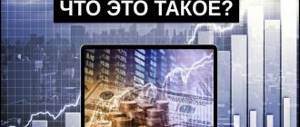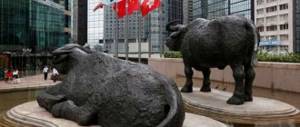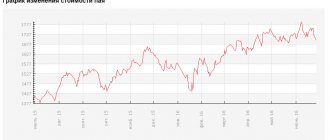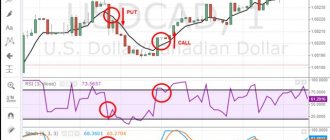Let's look at the risk/reward ratio and how traders can incorporate it into their trading plan.
What is risk-reward ratio and how to use it?
Is it worth risking your time to get the information from this article?
The risk-reward ratio shows how much risk you are taking based on the potential reward.
Good traders and investors choose their bets very carefully. They look for the highest upside potential and the lowest downside potential. If one investment can provide the same return as another but with less risk, it may be a better option.
Want to know how to calculate this yourself? Read on.
What is Money Management in Forex
When considering money management in the Forex market, it is worth starting with the fact that it is investment management. The strategy is often called a collection of money management rules. All the Forex books, the top list of which I have collected in my material, indicate that money management is a mandatory attribute of successful traders and needs to be learned. Money management is a method of allocating funds that minimizes the risk of losses under different market sentiments.
In simple words: money management is the ability to make a profit, even if the number of unprofitable and profitable transactions is almost the same.
Some sites offer not only instructions, but also an online money management calculator for calculating positions, allowing you to potentially determine profit and loss in advance. To do this, account characteristics are taken into account. If a special online program is not available on the resource, a calculation formula in Excel is used.
How did money management appear?
The author of money management is Jesse Livermore, who himself practiced stock trading and, realizing that this was more than 100 years ago, developed fundamental rules for the work of traders. In the very first version, the founder of the strategy formed 5 key positions:
- You should not believe your eyes and reveal your positions.
- You should never trade without stop losses - restrictions on top indicators.
- The maximum risk should be no more than 5%. At the same time, it is important to work in a positive emotional background - this is the key to half the success.
- You should not look for the top peak of positions; it is better to choose the average values.
- It's worth cashing out the money you earn.
Over time, money management has changed a little due to automated solutions, but the key positions do not lose their relevance today.
Method for selecting a safe lot
I constantly advise beginners to first prioritize not profit, but the reliability of trading . This means that at the start, and then too, you need to reduce the risk to a minimum, preferably within 1-2% of the deposit per transaction.
In the example, we will look at how to calculate a safe lot for the same transaction for deposits of $200 and $1000 . The entry point is shown below - buy at a retest of support after a reversal pattern.
Initial data
- SL – 52 points , USDJPY at the time of calculations is 111.85 . Classic account type .
- Deposits – $200 and $1000 .
- The acceptable risk for the transaction is 2% of the deposit .
- It is necessary to perform a lot calculation on Forex - to determine the maximum volume under which money management will not be violated for these conditions.
Procedure
- We determine acceptable losses in the deposit currency. For our example, the SL in cash is 0.02 x 200 = $4 and 0.02 x $1000 = $20 .
- One point under such conditions should cost no more than 4/52 = $0.077 and $0.385 for deposits of $200 and $1000, respectively.
- From the formula for calculating the price of an item, we derive the dependence for determining the maximum allowable volume.
Point Value = Lot x Pips / Exchange rate to dollar
From it we get:
Lot = Point Value x Exchange rate to dollar / Pips
In our example , for a deposit of $200, the maximum allowable volume for a transaction will be:
Lot = 0.077 x 111.85 / 0.01 = $861.245 or 0.0086 lot .
For a deposit of $1000, using the same formula, the volume will be:
Lot = 0.385 x 111.85 / 0.01 = $4306.22 or 0.043 ≈ 0.04 lot .
A problem arises - the broker set the minimum volume at 0.01, and for a deposit of $200 it should be 0.0086. So you will have to either reduce the stop, or miss the signal, or top up your account. As an option, a small violation of the MM , but this is where the loss of the deposit begins. Small deviations from the rules eventually turn into complete disregard for them . I recommend reading my educational program about margin calls to understand the dangers of violating money management.
I deliberately showed the most detailed calculation possible . After a little practice, you can estimate the transaction volume almost in your head. But you need to understand the theory. The video below shows a couple more examples with calculations.
Risk management in Forex
Risk management is part of the trading system, which indicates 2 important points: how many lots should be held at the current moment and how many risks to take. It is often said that risk management is about managing the size of the bet and, of course, this is a personal decision for each trader.
The clearest definition comes from Ryon Jones: risk management is based on how much to risk next time you open a trade.
If you look at the ratings of Forex brokers that I wrote about in my article, most of them use this strategy without fail. Even though the direction is based on 90% of the game, it still brings benefits and profit.
How did risk management come about?
Since money management is constantly associated with management, and risk management is one of the key positions, they began to develop at approximately the same time. There are 2 stages in its development: after the end of World War II until the early 60s, when the author Harry Markovets publishes an article on the choice of investments and their profitability and becomes a Nobel laureate. From the mid-60s to the early 90s, risk management left exclusively the stock trading market and the field of commerce, moving to banking organizations, insurance companies, and everyday life. Sometimes you can find stage 3 - working with digital money, but there is ready-made material about what the capitalization of cryptocurrencies is and how it is calculated.
Money management rules
Today there are quite a lot of money management rules; followers of the money management strategy, which consists of 10 basic rules, identify several important ones. First of all, you should start by taming your appetites, because a net profit per month of 10-15% is a good indicator. At the same time, it is also important to remember about 2 fundamental positions for beginners and experienced traders: increasing profits and saving the deposit.
Stages of money management in real life
| Name | Peculiarities |
| Goal: earn 50 thousand dollars a month. | You can attract primary and passive income. For ease of calculation, we consider the main one - salary. |
| Monthly salary | 22 working days per month at the rate of 50 thousand / 22 = 2272 dollars. |
| Salary per day | You can earn $103 in a day. |
| Salary per hour. Setting a limit | The working day is 8 hours, on average you can earn almost 13 dollars per hour. You cannot agree to the offer below and under no circumstances. |
| Distribution of funds received | 103 dollars of income per worker should be distributed to:
|
| Capital preservation | There are 2 strategies:
|
Using this table, it is also worth understanding: the time you devote to a specific person (problem, situation) costs $13 per hour, and WHO and HOW will actually pay for it? This will allow you to competently manage not only finances, but also time and emotional costs.
Deposit saving tactics
The efforts expended should be aimed at preserving and increasing capital. A classic business brings in 10-15% income, but regularly, every month. In total, this is a significant figure per year. A trader, with caution and his inherent restraint, must study market sentiment in detail, set aside emotions and make a plan: not only how to benefit from this transaction, but also how to increase his capital in total. This is especially important if you are discovering Forex for beginners, and even more secrets and pitfalls of the activity will be revealed in the finished material.
MM and profit increase
Profits should increase, but gradually, while risks should not increase in the same amount and at the same speed. Some platforms, for example, olymp trade, talk in more detail online or during personal consultations about tools for increasing income, offering contract programs and solutions. Paradoxically, it is much more difficult to record a small gain than to recognize a loss.
The best brokers with minimal spreads and slippages
Below I will list 2 companies with good trading conditions.
Exness
Cent , Mini , Classic , ECN accounts , the leverage is adjustable in a wide range. In addition to dozens of currency pairs, CFD on crypto and other instruments is available. The commission on ECN accounts is $25 per million traded , the spread on the majors is very narrow, less than a point during peak activity hours.
Open a cent account with Exness
AMarkets
Standard , Fixed , ECN (from $200), Institutional (from $100,000) accounts The spread is slightly higher than that of Exness; for majors it does not fall below 1.3-1.5 points. Trading is carried out in currency pairs, there are CFDs for crypto , metals, indices and other instruments.
Get started with Amarkets
I would also like to note the very fast execution by both companies. There is practically no slippage .
Trading Strategies Money Management
The basic rule of all money management strategies used in trading is not to look for a universal formula that brings success in 90-100% of cases, even if a successful indicator of 60-70% is achieved, this is considered a professional high result. You can apply one or several strategies, but it is important to determine and set them in advance before opening a transaction.
Hedging strategy
This is risk control that is applicable to one direction or an entire portfolio; on this basis a hedge fund is formed. It is also customary to say that this is insurance in case of changes in exchange rates or quotes and occurs when opposite transactions are opened, but in the same financial field. Used for the futures market, binary options. The strategy is indispensable if you choose the main binary options, which I wrote about in my material. Current direction if the trader has access to the market and can buy contracts in the opposite direction of the trend.
Insurance strategy
The strategy is based on the fact that you can only lose up to 5% of your total capital, but some experts say that the limit is 30% of the deposit. This rule also includes the fact that the profit received is immediately withdrawn, and is not started for work again. In some countries, a client can purchase an insurance policy in case of an unforeseen financial crisis that results in losses, but in the Russian Federation such a service is not yet available.
Diversification strategy
Use several transactions for the same amounts to minimize risks. It is also worth using several market areas to work with. If you want to trade $1000, then it makes sense to invest this amount in 5 trades, not just one. This rule is extremely relevant if you choose to invest in cryptocurrency, and other rules for investing in this segment can be found in the material on gq-blog.com.
Limitation strategy
The concept of limiting is that it is necessary to set limits for transactions. The limiting system should include indicators for a specific transaction and for total amounts, taking into account the level of return and payback time. The method is also used when issuing loans, in banking, and in insurance companies. The stock market, which I wrote about, as well as other commercial areas, set requirements for limits: they must be designated at the very start.
Portrait gallery.
The similarity of approaches to risk management within the selected groups allowed us to form portraits of typical risk management systems in management companies (for those management companies that pay attention to these issues). It is noteworthy that both advanced and less complex approaches have their pros and cons. The scale of the business of medium and small management companies allows them to take a more flexible approach to risk management issues and resolve some issues not at the system level, but at the operational level in close contact with clients. For large management companies with a wide client base, diversified business and, accordingly, much lower risk tolerance, such an approach is unacceptable, and therefore it is more profitable and cheaper for them to maintain a full-fledged integrated risk management system.
Minimum program
Most companies that belong to the “right” type have risk management structured quite simply. Risk management functions are usually concentrated in a separate department, or with an employee who is part of the investment unit with final subordination to the investment director (Graph 2). In the “right” companies, the risk manager is part of the investment committee with advisory voting rights. However, as a rule, he cannot influence any investment decision, much less block it.
This design makes it possible to solve problems of managing various types of risks, but almost always significantly reduces the status of risk managers in the decision-making chain. This means that if a conflict of interest arises between managers and risk managers, there may be lobbying for the adoption of a riskier decision that corresponds to the goals of managers, but runs counter to the objectives of risk managers.
| Graph 2. Risk management without authority Source: Expert RA |
The risk control process of “Correct” management companies is divided into several stages.
First of all, risk factors are identified and determined, changes in which may affect the value of the company’s assets, risk objects whose value depends on the risk factors are assessed. Risk objects are all financial instruments included in the investment portfolio.
Next, risk managers assess and conduct risk analysis. The risks that are most significant for the company and that are amenable to control are identified. The likelihood of negative events occurring and the management company’s ability to compensate for their impact are assessed. At this stage, assessment methods and procedures and risk indicators are usually developed.
Procedures for identification, assessment, control and mitigation of risks describe the necessary components, specific actions of employees, their powers, responsibilities; structure and size of limits, interaction of participating units. The risk manager analyzes existing operations and business processes from the point of view of compliance with an acceptable level of risk.
The final stage of the work carried out by the risk manager is the implementation of controls that ensure compliance of the operations carried out with the accepted procedures and the effectiveness of the application of these procedures. Ideally, risk controls are separated from the operations staff to make it difficult to abuse and avoid conflicts of interest.
“Correct” management companies manage the main types of risks. Operational risk management in companies is ensured by the internal control system. Control of market risks in companies is carried out by assessing the level of risk based on the VAR (Value at Risk) methodology. A number of companies conduct back testing of models once or twice a year, but this practice is not universal. Market risk management can be carried out on the basis of a portfolio approach to activities.
To maintain current liquidity, companies need to have a sufficient supply of liquid assets, which imposes restrictions on investments in low-liquidity assets. The decision on the maximum share of low-liquidity assets, as well as on the criteria for asset liquidity, is made by the investment committee. Liquidity planning involves calculating the expected gap between the inflow and outflow of funds in a given time interval, as well as monitoring the actual implementation of such plans. For operational liquidity management, companies use the current forecast for customer payments, compiled taking into account the degree of their likelihood. If there is excess liquidity or lack of liquidity, an order is given to buy or sell assets.
To control credit risks, systems of counterparty limits are used. Counterparties are assessed based on scoring models.
Mid-level companies rarely have implemented certified software. Calculations are usually carried out in Excel; limit policy control can be implemented in a separate module by in-house programmers.
Best practice
The leaders of the Russian asset management market build their business according to the best Western canons. Risk management in these management companies is present in the form of a control system built into all business processes.
“Leaders” always allocate risk management to a separate division, and this division reports directly to the CEO. This hierarchy allows risk managers to effectively influence decision-making in the company and not depend on other managers. The separation of risk management allows employees of this block to focus on solving direct problems without being distracted by related tasks (for example, the functionality of analysts). With such an organization, the risk manager can block any management decision if it does not meet the established acceptable risk levels.
In the business processes of companies, the risk management system is an intermediate link between the company’s management and the company’s divisions (Graph 3). The risk management division consults other departments of the company on risk issues and receives information from them for analysis, on the basis of which control is carried out. Based on the data obtained, the head of risk management reports to the head of the company. The business process “risk management” in a broad sense can include not only the risk management department itself, but also the internal control department, compliance, and the legal department.
| Chart 3. Principle of organizing interaction between risk management and management departments. Source: Expert RA calculations based on Central Bank data |
In “advanced” companies, in addition to the investment committee, there is an additional risk committee. The creation of such a committee allows for more effective risk control. With a multi-level control system, the risk manager does not have to be present on the investment committee, because An investment decision that does not meet the established risk levels will simply not reach the level of the investment committee.
“Advanced workers” divide risks into two categories. The first – investment risks – is dealt with directly by the risk management department. Risks in this category are directly related to investment activities and include market risks, liquidity risks and credit risks. The second category – “business risks” – includes the responsibilities of other departments. Operational, legal and compliance risks are dealt with, respectively, by the internal control service, the legal department and the compliance department.
As a result, control is multi-stage (Graph 4). Risk monitoring starts from the front office. Next comes control at the division level (risk management department, compliance and internal control). At the third stage, the results obtained are discussed by the risk committee and investment committee. The top level of the investment risk control process is internal and external audit.
| Chart 4. Multi-level investment risk management process. Source: Expert RA calculations based on Central Bank data |
The principles of investment risk management among the “advanced” companies are similar to the “correct” management companies, but the tools of the “advanced” are broader.
Market risks include stock, currency and interest rate risks. Market risk management is regulated by a unified methodology and is based on international standards, often the recommendations of the Basel Committee. Risk management identifies possible market risks at all levels of management and decision-making when conducting transactions in the financial market. Limiting, assessing and controlling the risk of operations for various market instruments is carried out in compliance with uniform standards, regardless of the specifics of the operations.
As part of market risk management, “advanced” managers, as well as “correct” managers, calculate limits on counterparties, on issuers, adding to this structural limits on portfolios, limits on open currency positions, limits on duration, limits on risk, limits on losses, multi-currency discounts.
In relation to credit risks, credit limits are used. They are established at the level of borrowers and counterparties and include various types of risks for all operations within the company's activities. If there are no limits, the transaction can only be allowed against collateral. Purchasing securities outside the limits is not allowed. “Advanced” companies use a system of ongoing monitoring and control of credit risks, use and improve the system of internal ratings (scoring model). Risk management uses a system of warning and correction of the situation in the early stages of deterioration in the financial condition of borrowers, management of problem or doubtful debt.
The credit risk management system includes analysis and assessment for specific products, a system for making decisions on transactions that carry credit risk, limiting the loan portfolio and decision-making powers that carry credit risk, including setting limits, creating reserves for possible losses, and working with problem assets .
To reduce credit risk, companies are changing the structure of their own portfolio and the portfolios of the company’s clients, issuing additional collateral, suspending the issuance of certain tranches for problem transactions, informing management authorities about the increase in the level of credit risk, as well as making proposals by the risk manager to reduce credit risks.
When carrying out transactions containing credit risks with foreign counterparties, country risk arises. To combat it, they use the establishment of country limits and standard procedures for assessing and managing credit and market risks.
Currency risk management involves stress testing, scenario analysis, quantitative assessment of the influence of fundamental factors, exchange rate volatility, and dependencies between exchange rates. Currency risk is limited by limiting the volume of positions under currency risk, the volume of an open position for a particular currency, and the timing of open positions.
To control liquidity risks, a maximum share of illiquid securities is established, where the liquidity of each individual security is. Company analysts are studying the potential impact on liquidity of new instruments in the securities market.
“Advanced teams” control liquidity through management of the current payment position (monitoring short positions, movement of funds under repo transactions, execution of margin calls, forecasting short-term receipts and payments). Strategic (long-term) liquidity management is also carried out, aimed at ensuring financial stability and fulfillment of obligations to clients (monitoring compliance with the liquid position of companies in terms of the terms of assets and liabilities, assessing the degree of liquidity of company assets, forming the necessary reserves, a plan for additional financing in a crisis situation).
As part of operational risk management, business processes, risks of personnel actions, risks of information technology, and risks of emergency situations are monitored. Moreover, this process is combined with the principle of economic feasibility: the cost of control measures should be less than the amount of possible losses from the realization of the risk.
The department responsible for compliance monitors the compliance of internal procedures and organization of business processes with applicable laws, regulatory standards, and the provisions of the general compliance control policy; monitoring the occurrence and management of conflicts of interest; monitoring compliance of employee qualifications with regulatory requirements; control of client protection rights; informing management about the level of compliance risks and methods for managing them.
As tools for managing compliance risks, they use ongoing monitoring, training employees in the requirements of compliance control, developing proposals and comments on existing and developing internal company regulations.
As a result, the risk management system of “advanced” management companies is a chain of controls that makes it possible to manage absolutely all the risks that the management company faces in its activities and maintain these risks at an acceptable level. (Chart 5).
| Graph 5. Control objects and tools. Source: Expert RA calculations based on Central Bank data |
All “Peredoviki” work on integrated software that combines risk management modules with a portfolio support system and financial systems. To date, only a few of the largest companies have implemented fully integrated and certified software.
Basic rules of Money Management
I suggest you take a closer look at the rules of money management from 10 positions that are relevant in trading and in everyday life.
- Initially, you should think not about profit, but about risks.
- Stop losses are a must and they are not for cowards. You need to understand exactly how much you can lose.
- Losses are inevitable, no matter how careful you are. The stock market and life often develop in the same field.
- Margin leverage of 1:100, 1:200, 1:500 and higher by dealing centers is designed for inexperienced traders and makes them think about profits, but not about losses.
- When making trades, do not increase the volume of trades by more than 10 times in your experience.
- It's not worth acting out. Never.
- It is necessary to focus on the system and set the motion vector.
- Conduct market analysis, draw conclusions and avoid making the same mistakes twice.
- Observe strict discipline and the rules of the algorithm.
- Skillfully use indicators, assistants, strategies.
And what kind of Forex strategies there are, I indicated in detail in the material of my GQ Blog Monitor.
How to set the transaction volume in MetaTrader
This parameter is specified in the order settings field:
- Click Trade — New order.
- In field Volume either select it from the drop-down list, or specify it manually. You cannot set a lot below 0.01.
- All that remains is to put stop And take profitand then press Sell or Buy.
If the 1-click trading mode is activated, the volume is indicated in the upper left corner. The corresponding field is located between the Buy and Sell .
When trading, do not forget to take into account the difference between Bid and Ask prices . Read the post about the spread when buying an asset, where this issue is discussed in more detail.
Basic rules of Risk Management
In order for the deposit to increase, you need to follow certain rules and more about them right now.
- The safest trade is the direction of the medium-term trend.
- Make a plan and follow it exactly.
- You should not break the rules of money management.
- Mandatory use of the stop loss technique.
- Close unprofitable positions earlier than profitable ones.
- Avoid making important decisions before closing deals.
- Constantly improve your knowledge and skills.
- Do not take impulsive actions.
- Complex trading is less effective than simple trading.
- Using risk diversification.
These rules are in many ways identical to money management strategies, and sometimes it is difficult to find the difference between them, especially for inexperienced traders.
I would like to note that today some individual consultants offer to teach you the basics of risk management, and will also open up money management for you in the markets, in particular, in binary options. Over time, their valuable experience can be useful. To summarize, I summarize that risk management is one branch of the general strategy for managing all capital. No trading in the Forex market or binary options will be successful if important positions are not taken into account.
They are used by bulls and bears in the market, and who they are is in the finished material on the blog. Some trading platforms, like Olympus Trade, offer money management on their websites, which allows you not only to learn the basic principles of trading on a demo account, but also to make a profit in real transactions. Traditionally, I wish you that competent risk management and capital management will always bring only income, and that you pay as little attention to drawdowns as possible, and as a result, transactions will be more positive than unprofitable.
See also:
- Financial airbag - how to create and how much to save?
- Rating of Forex brokers - how to assess potential and choose a reliable Forex partner
- What is asset management? The main stages of managing current and non-current assets
Author Ganesa K.
A professional investor with 5 years of experience working with various financial instruments, runs his own blog and advises investors. Own effective methods and information support for investments.
Preface
This article will try to answer the following questions:
- Using Risk to Reward Ratio on a Chart
- What should be the risk to reward ratio in trading?
- How to Apply Averaging Strategy, Martingale and DCA in Cryptocurrency Trading
For a deep understanding of this text, I recommend reading the two previous articles. Because in this article we will learn how to apply this knowledge in real trading.
- Fundamentals of risk management in trading
- Fundamentals of Risk and Reward
We already know that we want low risk and high reward. Finding such deals is a joy for a trader. There we can place $100 to earn $1000 with a 50% chance. Our discovery of such transactions leads to a discussion of their feasibility. The answer can be found by studying trading techniques and strategies to identify the right trades.











